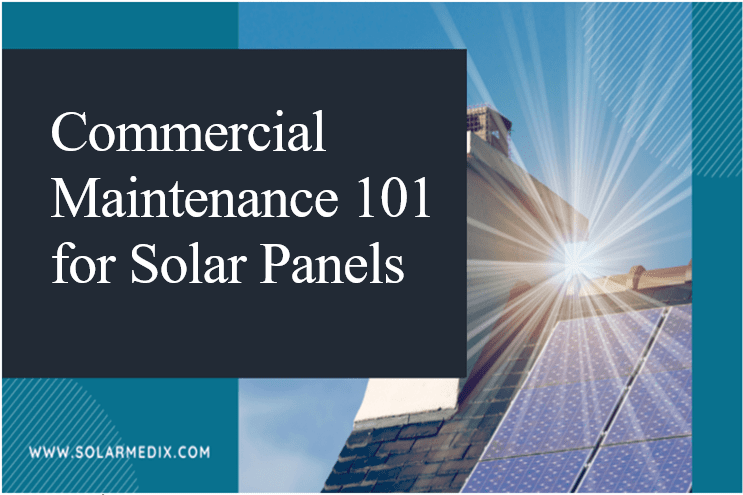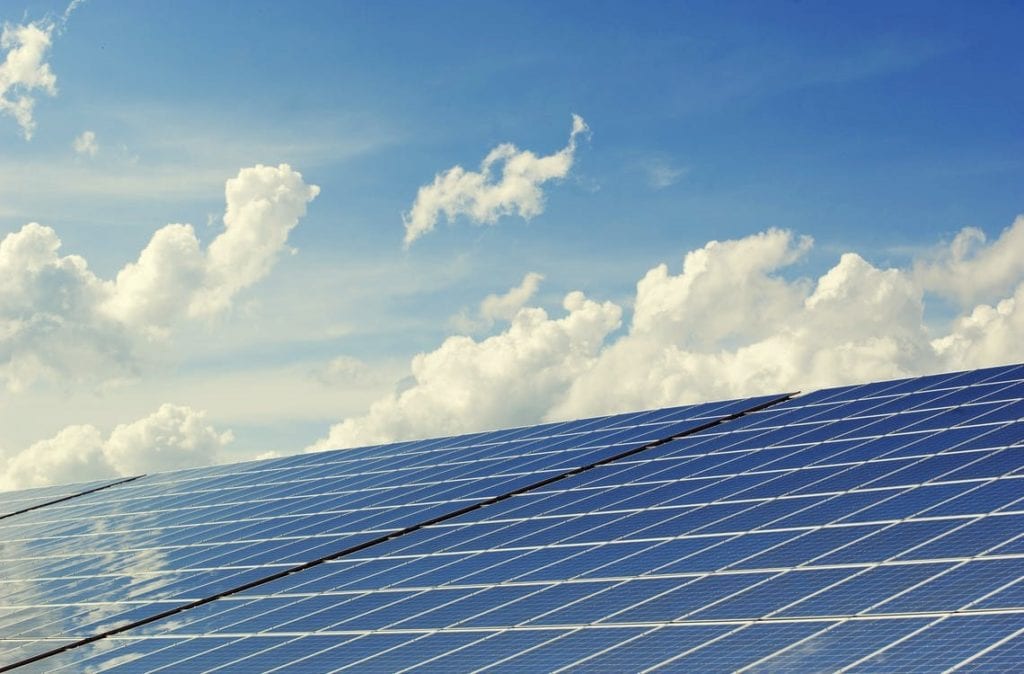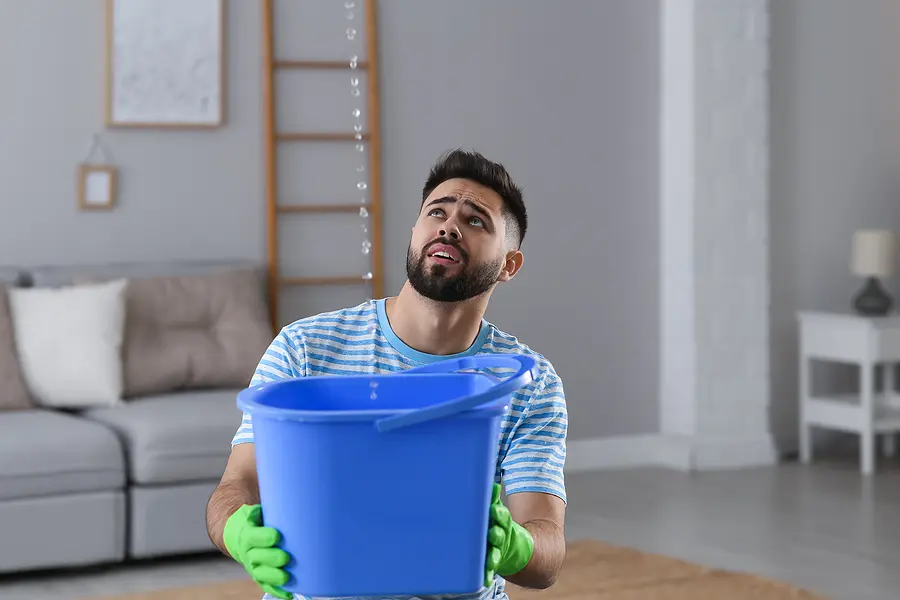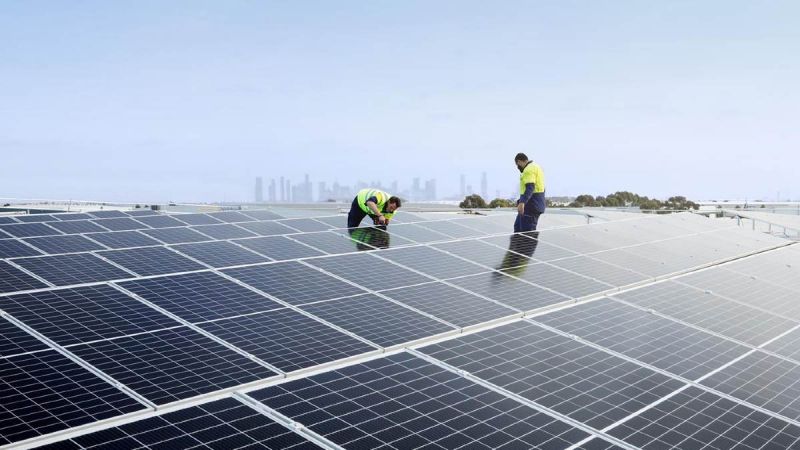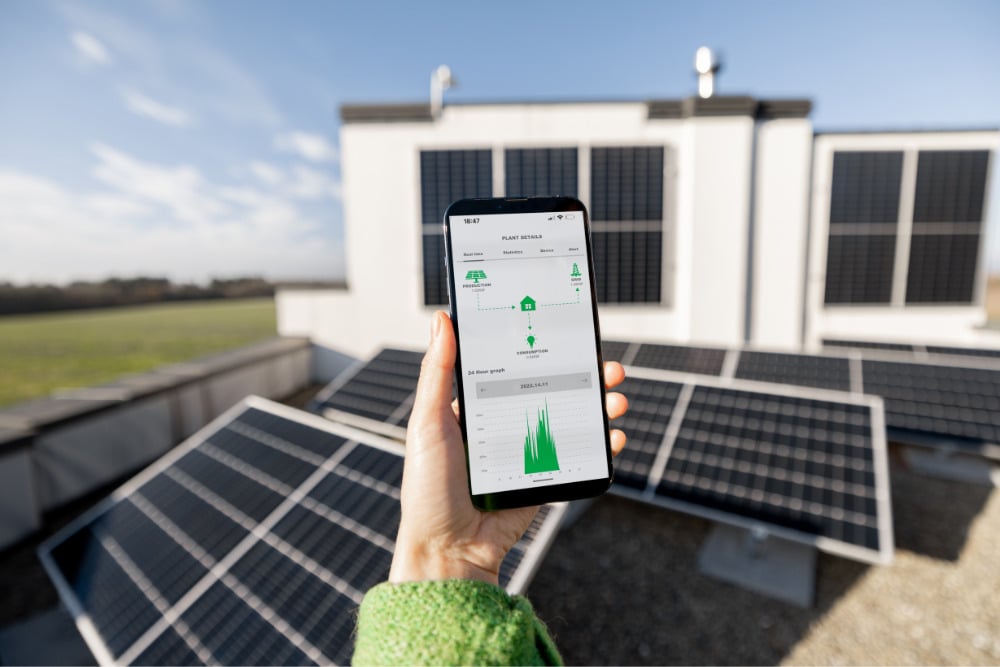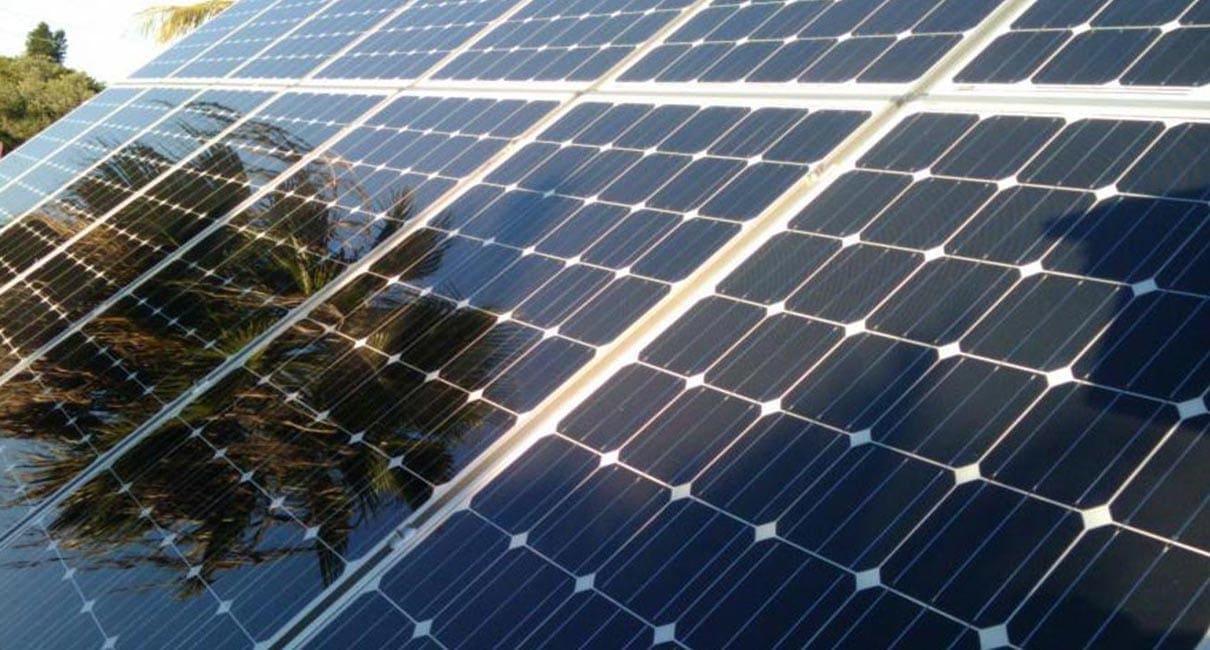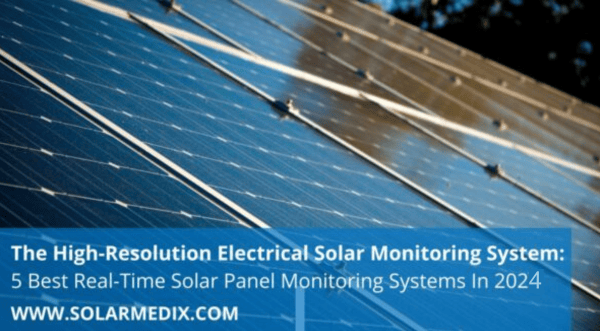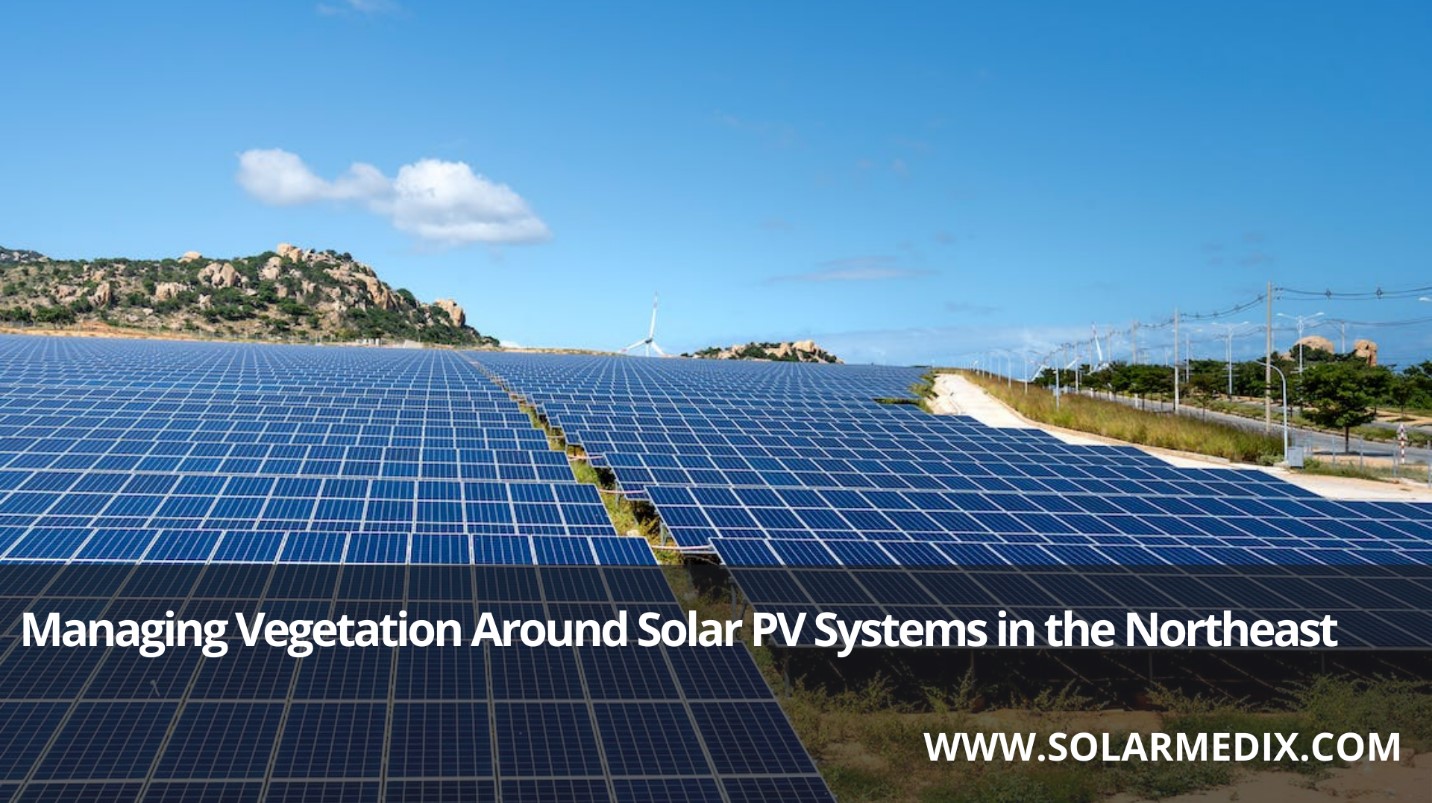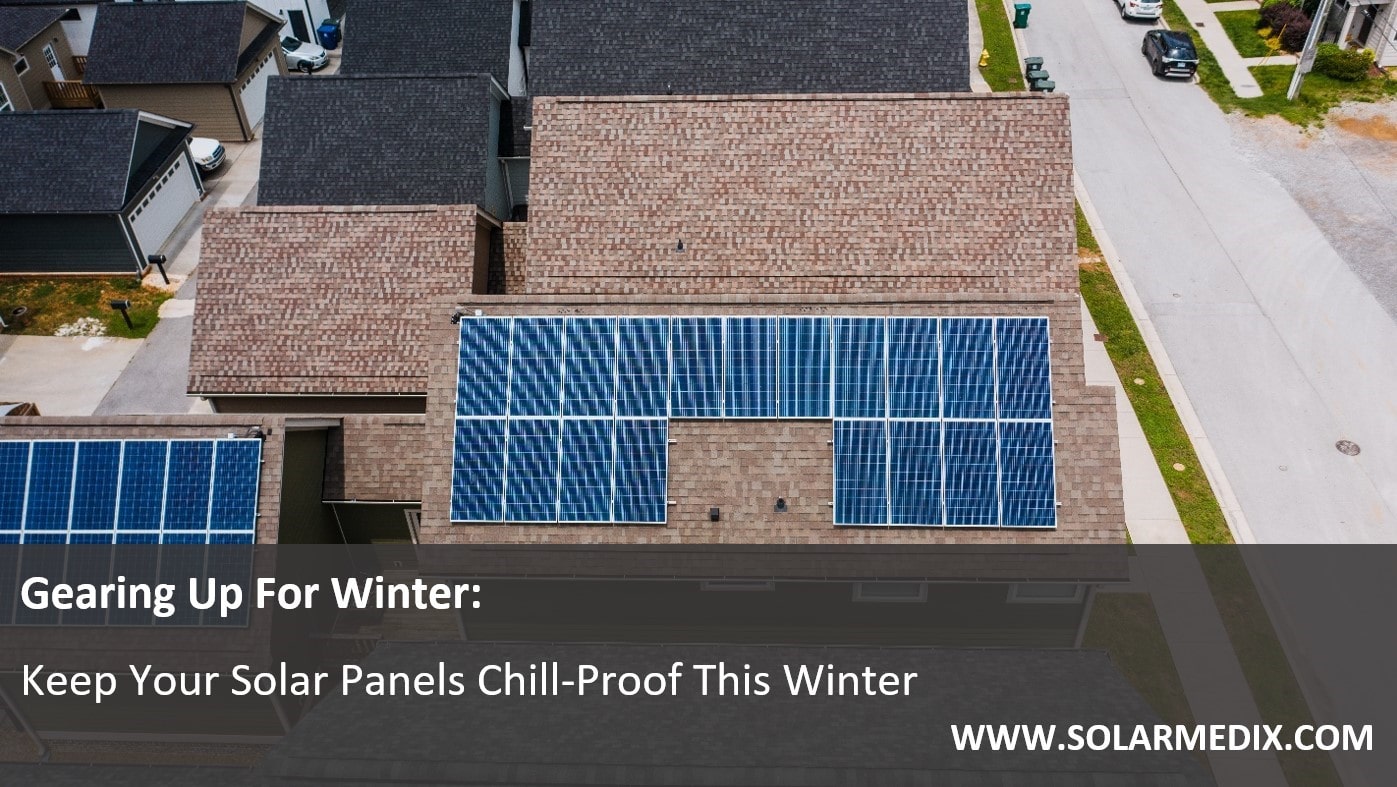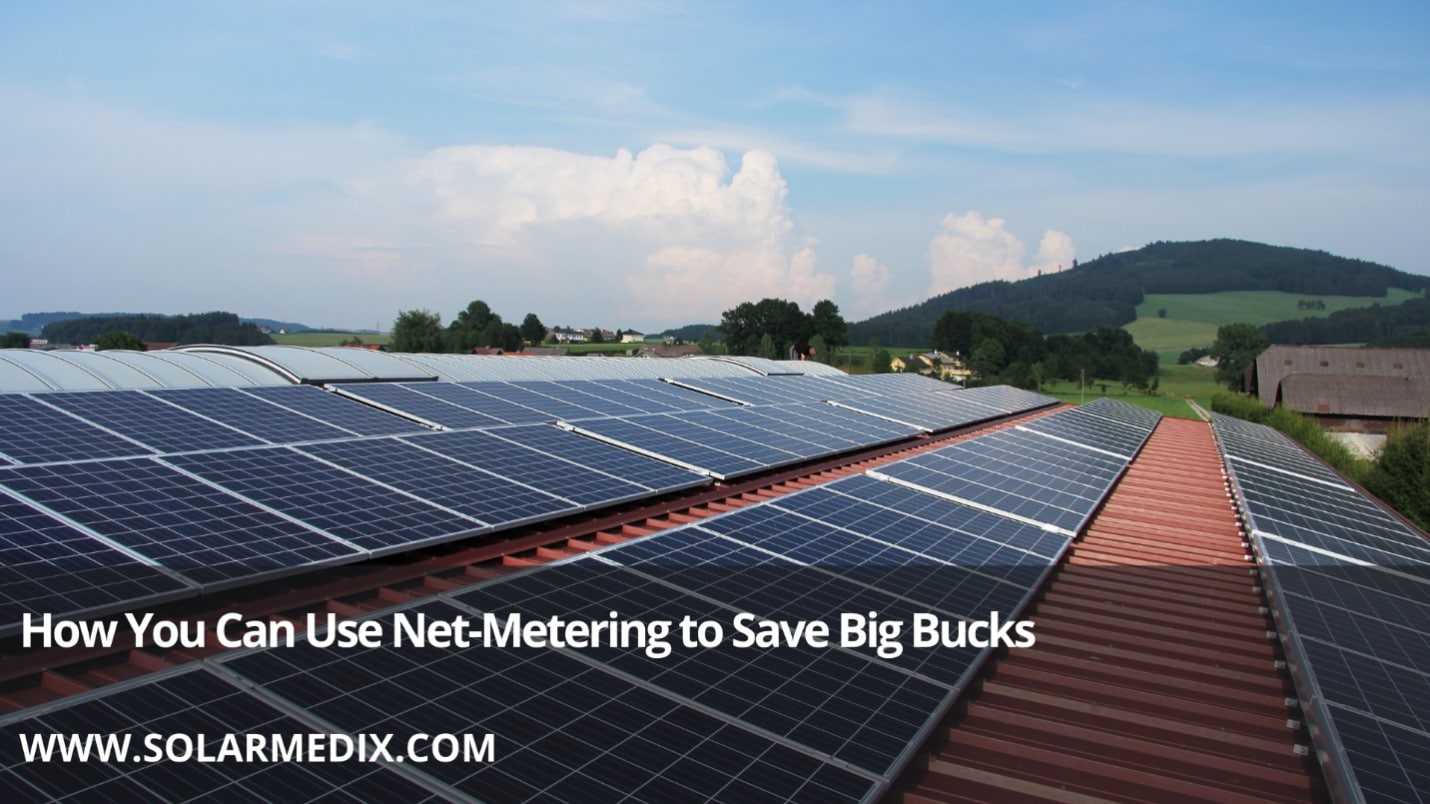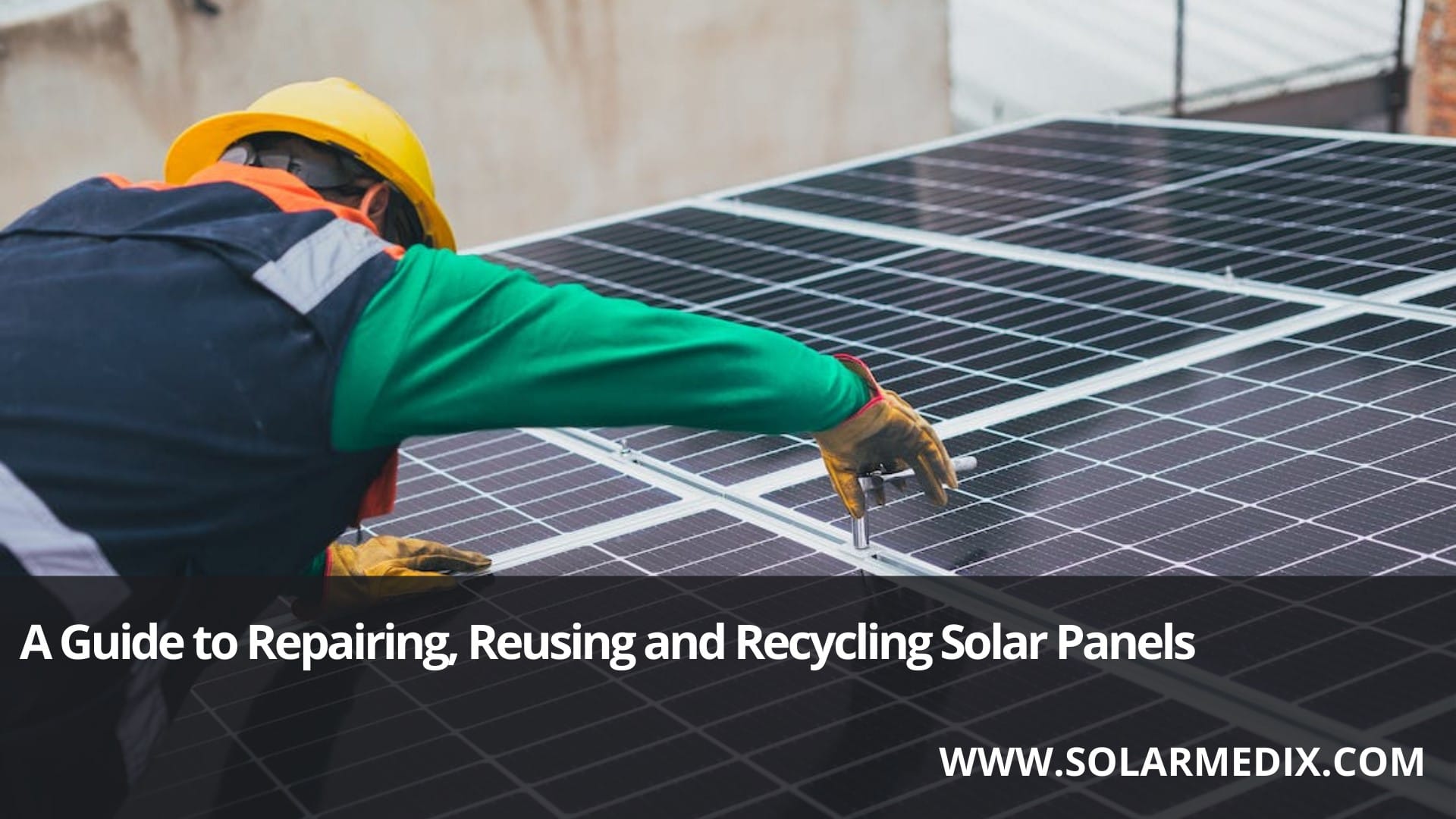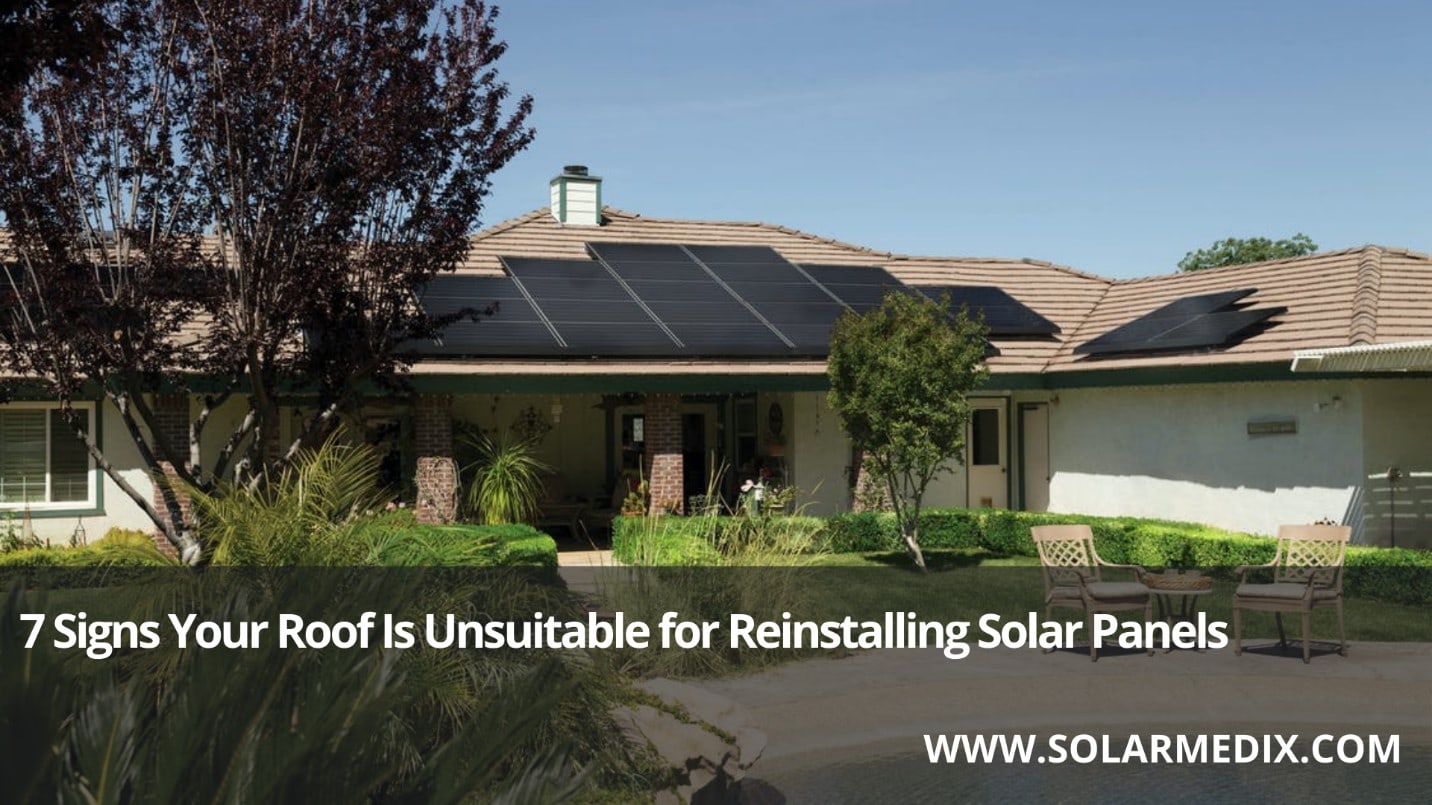Unmaintained and unclean solar panels can lose anywhere from 15-25% of their efficiency. In other words, not maintaining your solar panels can cost you a quarter of your system’s energy output. This article will take you through all you need to know about preventative and reactive maintenance for your commercial solar energy system.
What Is Preventative Maintenance?
The term “Preventative maintenance” is quite self-explanatory in itself. To put it simply, preventative maintenance entails a maintenance sequence and strategy involving regular checkups of your commercial solar energy system in order to make sure that all system components are correctly operating at their full capacity.
Additionally, it also serves to prevent any technical problems from degrading your commercial solar panel system’s health and performance. Generally, preventative maintenance for solar arrays should be scheduled at least once a year; however, that would be doing the bare minimum. For large scale systems for massive commercial buildings, the maintenance procedures should be scheduled more frequently.
A standard maintenance inspection typically involves the solar technician conducting a detailed examination of the system that includes an extensive test of your system’s electrical and physical components. Some main areas of focus in the inspection are the solar panels themselves, the mounting equipment, evaluation of the inverter, roof condition, electrical connections, and much more.
In the case that any of the assessments indicate a technical issue or a developing technical complication, appropriate corrective measures will be implemented.
Why is Preventative Maintenance Important?
The primary purpose of preventive maintenance is to ensure that a solar energy system provides you with maximum system uptime, output, and efficiency. Regular maintenance helps keep the system in its optimal working order and ensures that possible problems are eliminated before they can harm the system.
Solar arrays that are in good working order provide their owners with consistent and substantial financial benefits. However, the owner of the system cannot fully reap these benefits if a technical issue ensues in the system. Therefore, a commercial solar energy system owner preserves their investment by scheduling and conducting the appropriate preventative maintenance procedures, thereby maintaining optimal system performance and thus reaping the financial advantages to maximum.
It’s all too easy to forget about your solar array’s upkeep. However, if routine maintenance is not performed, the likelihood of a major problem developing increases, which might have a significant impact on your system’s total energy production or health. This would mean that your business would have a greater reliance on the grid to accommodate its energy needs. This translates to fewer savings and hence, a lower ROI.
What is Reactive Maintenance?
The glass panes used in solar panels are incredibly durable and can support a weight of 50lbs to 75 lbs. Additionally, solar panels, unlike hydropower and windmill systems, do not have any moving or rotating parts. These two pros of solar have misled people into believing that solar panels require little to no maintenance. This has resulted in people opting for corrective maintenance instead of preventative maintenance.
The primary difference between the two types of maintenances is that corrective maintenance is scheduled and conducted only when a failure or a fault is detected in the solar energy system. On the contrary, preventative maintenance works to avoid the development of any faults from arising by eliminating any potential threats before they escalate into a major issue.
Why is Preventative Maintenance Preferred Over Reactive Maintenance?
Since corrective maintenance procedures are targeted to remedy a fault rather than prevent it, they are usually more expensive and time-consuming. This is because, with corrective maintenance , the solar expert first needs to diagnose the fault and identify the source of the fault in order to devise an effective solution to the problem.
For instance, replacing the solar panel glass as a remedy for hotspots will not solve the problem. Instead, it will just mask it. In order to properly solve the problem, the technician will have to trace the problem back to its source, which could be a poorly soldered connection in this case, so that they can terminate the root of the problem, ensuring that it doesn’t occur again.
Furthermore, depending on the severity of the fault, the solar expert might even have to disassemble your solar panels from their mounts in order to effectively deal with the problem. Naturally, this will subject you to higher labor costs and will eat up more of your time. In most cases, it is most cost effective to replace the module entirely however.
The latter translates to a prolonged system downtime which in turn would mean that you would have to either rely on the grid for your energy needs, arrange a backup power source such as a generator, or temporarily stop your business operations. It is for this reason that professional solar companies and solar experts recommend that you strictly adhere to routine preventative maintenance procedures.
However, it is important to keep in mind that preventative maintenance does not guarantee a failure-proof system. Solar panels are just like any other electrical system in that they are prone to abrupt and unforeseen failures.
Preventative Maintenance Tips to Ensure Peak Performance of Your Commercial Solar Energy System

Below are some basic preventative maintenance measures that will help you maintain your commercial solar energy system at its peak performance.
Regular Solar Panel Cleaning
It should not come as a surprise that cleaning solar panels is at the top of the list. Accumulation of dirt, grime, and debris on your solar panels is the most prevalent performance-killing factor that can target your system. It is common knowledge that solar panels work by harnessing energy from the solar radiations that are incident on them and converting it to electrical energy. This means that the more solar radiation your panels receive, the better they perform.
However, what you may or may not know is that it is the solar PV cells beneath the top layer glass layer of the panels that are responsible for this energy conversion. Keeping this in mind, the performance of your system directly depends on how much light is able to pass through the glass layer of the panels.
The accumulation of dirt, trash, and animal droppings act as a barrier against sunlight, thereby reducing the quantity of sunlight reaching the solar cells, hence lowering their effectiveness. The detrimental effects of accumulation can be reduced by having your panels professionally cleaned once or twice a year.
But do keep in mind that how frequently your system needs to be cleaned depends on the location of your business. If you’re located in a dusty environment, you’ll need to have your systems cleaned much more frequently than just twice a year, perhaps once every week.
Regularly Cleaning Under Your Solar Energy System
Wild animals and birds such as pigeons and rodents have a habit of nesting in sheltered places such as under your solar panel array. A rooftop location of your solar energy system makes it even more preferable for wild birds.
The nesting of wild animals can potentially damage your system and deteriorate its performance. For instance, pigeons can paint your panels with bird droppings. Meanwhile, rodents can chew upon electrical wiring leading to electrical issues. Not to mention that wild animals will make an additional mess on and around your system, requiring you to clean it more thoroughly and frequently.
Regularly cleaning the space under your system will prevent animals from nesting there. Additionally, you can also opt to seal the under-space using mesh. Another uncommon yet effective solution is to have inanimate predators placed on the roof to deter wild animals.
Trimming Adjacent Vegetation to Avoid Shading
Having a tree branch or vegetation growing over your system will shade the solar cells preventing sunlight from reaching the panels. This will diminish the performance of your system the same way dirt and debris accumulation does. In order to avoid this, clear away any overshadowing tree branches or vegetation on a regular basis.
Inspecting Wiring and Connection Points
A commercial solar energy system will have numerous connection points, such as from the panels to the junction box and to the inverter. Over time, the connections may come loose, especially if seasonal storms and rough weather conditions inhabit the area you’re located in.
Loose connection points and wiring lead to higher circuit resistance meaning enhanced power loss and excessive heating of the system components. All it takes is a yearly wiring examination to spot and correct possible wiring and connection issues before they deteriorate your system’s performance.
Inverter and Battery Inspection
Inverter and battery are crucial elements of a solar energy system. Your inverter is responsible for converting the DC output of your panels to AC. The battery stores the surplus energy that your system generates so that it can power you in the dark and overcast days. Therefore, it is important that your preventative maintenance covers your inverter and battery.
The display on your inverter is an effective way to judge whether or not your system is performing up to the mark, meaning that your inverter can be used to identify any potential issues in the system. Additionally, loose and rusted connections or terminals can potentially diminish your backup time due to energy wastage. A yearly or semiannual checkup of the inverter and the battery can help ensure that the two devices are in proper working order.
System Faults That Would Qualify for Reactive Maintenance
As discussed above, reactive maintenance is required only when faults are detected in your commercial solar energy system. Following are some common system faults that would require you to seek out reactive maintenance services:
Hotspots
There are several reasons why this problem may arise in your solar panels. The two most common factors that promote this problem are partially shaded solar panels and poorly soldered cell connections. Both these factors lead to the inability of current to flow through some of the cells. This results in a greater amount of current flowing through the rest of the active cells.
The excessive current causes the solar cells to overheat and melt. In the case of severe overheating, the solar cells may even catch fire. This makes hotspots one of the most common solar-related fire hazards. Usually, hotspots can leave brown stains on your panel glass; if you notice any such stains, act immediately and reach out to a professional solar company.
Micro-Cracks
Micro-cracks are microscopic fractures on the glass of your solar panels. These cracks can be linked to various culprits such as a manufacturing fault, careless installation, or rough weather. While these cracks aren’t sizeable enough to be detected by the naked eye, they can escalate into larger tears over time.
The fractured glass will disperse a significant portion of the sunlight that is incident on it, thereby degrading the performance of your system. The silver lining about this situation is that preventative maintenance can alert early on of any micro-cracks that may be present on your panels, allowing you to prepare in advance for appropriate corrective measures.
PID Effect
Potential Induced Degradation (PID) is a performance deteriorating phenomenon that occurs when there is an inconsistency in the panel’s voltage and its earthing. Solar panels have to be earthed in order to prevent them from going live in case a live wire comes into contact with them due to a wiring defect. However, if the produced voltage and earthing do not match, the main power circuit may experience a partial voltage discharge. As a result, your PV panel’s performance will continue to deteriorate, and its lifespan will be shortened.
Frequently Asked Questions (FAQs)
Is There a Difference Between the Maintenance of Rooftop and Ground-Based Commercial Solar Energy Systems?
The only difference in maintaining the two types of systems is that ground-based systems are easier to access. However, the preventative and reactive maintenance procedures remain the same.
What Kind of Maintenance Do Solar Panels Require?
Solar panel systems only require routine cleaning. Additionally, scheduling a preventative maintenance inspection once every year, twice if you live in a dusty and storm-prone area, should be enough to ensure a well-working system.
How Often Should My Solar Panels Be Cleaned?
Generally speaking, cleaning solar panels should be cleaned at least every six months. However, the required cleaning frequency can vary depending on the location of your system.
What is the Best Time to Clean Solar Panels?
The ideal time for solar panel cleaning is early morning or late in the evening. An overcast day would also work great.
What is the Best Way to Clean a Solar Panel?
Using a non-abrasive sponge and mildly soapy water would make for an excellent and effective way to clean your solar panels.
Final Thoughts
Routine preventative maintenance is the ideal solution to prolong the life of your commercial solar energy system and ensure that it operates at optimal capacity. However, it is essential to remember that there is still the likelihood of your system developing a sudden and unexpected fault for which you will need to consider reactive maintenance measures.
The team at Solar Medix are ready to answer your questions and give you a no-obligation price quote. Feel free to call us at 732-785-4814 or book a consultation online. And we’ll get in touch within 24 hours.
